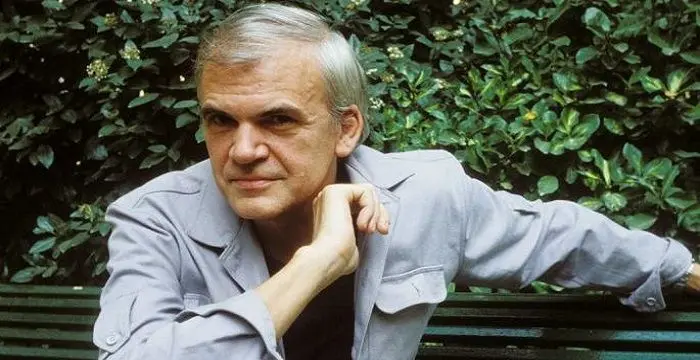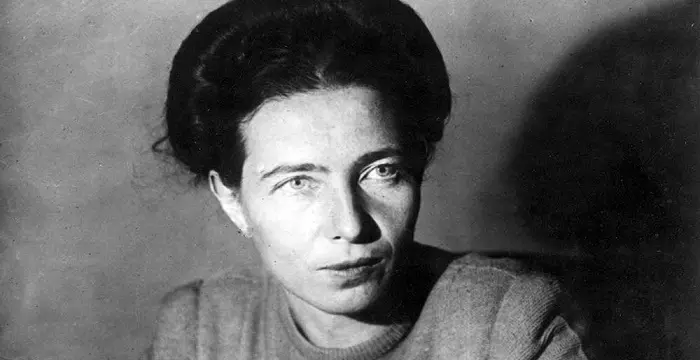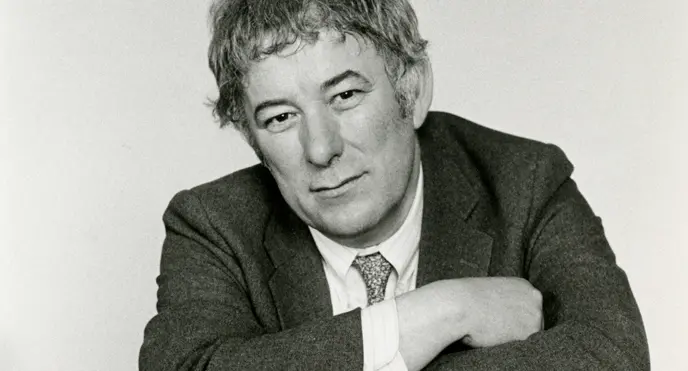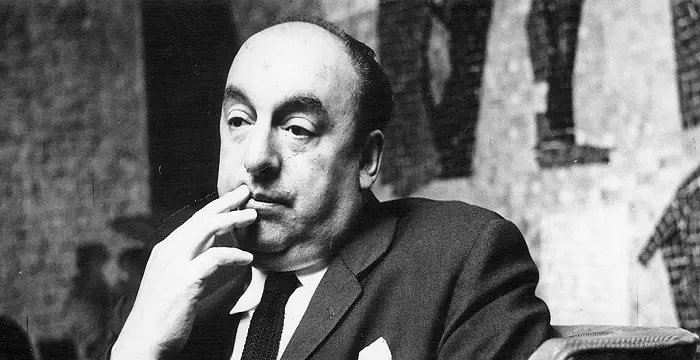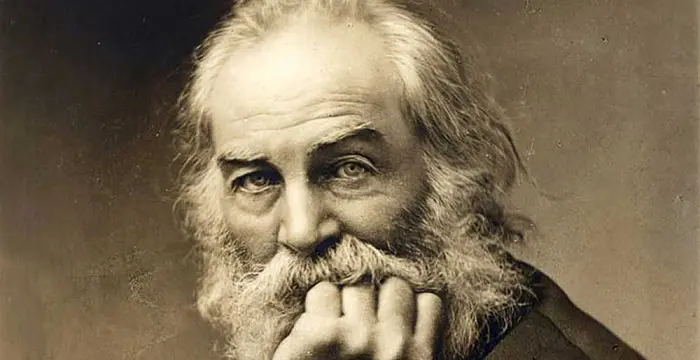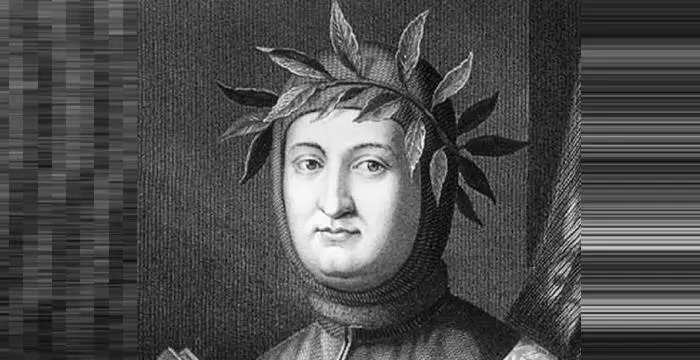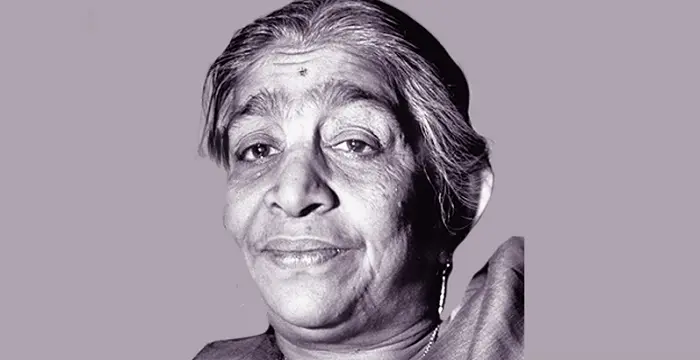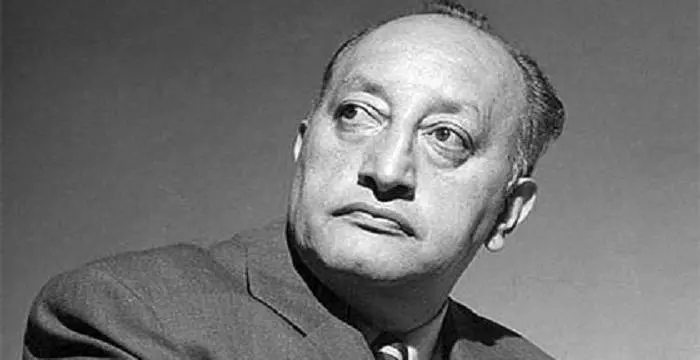
Miguel Ãngel Asturias - Writers, Family and Facts
Miguel Ãngel Asturias's Personal Details
Miguel Ángel Asturias was a literary figure of Guatemala who was honoured with the ‘Nobel Prize’ for literature
| Information | Detail |
|---|---|
| Birthday | October 19, 1899 |
| Died on | June 9, 1974 |
| Nationality | Guamanian |
| Famous | Nobel Laureates In Literature, Socialists, Writers, Poets, Novelists |
| Ideologies | Socialists |
| Known as | Miguel Angel Asturias |
| Childrens | Rodrigo Asturias |
| Universities |
|
| Birth Place | Guatemala City |
| Gender | Male |
| Sun Sign | Libra |
| Born in | Guatemala City |
| Famous as | Poet |
| Died at Age | 74 |
// Famous Writers
Joyce Meyer
Joyce Meyer is a Christian author and speaker. This biography provides detailed information about her childhood, life, achievements, works & timeline
Temple Grandin
Temple Grandin is a well-known American writer, autistic activist and animal expert. This biography profiles her childhood, life, achievements, career and timeline
Tennessee Williams
Tennessee Williams was one of the greatest playwrights of the 20th century. This biography of Tennessee Williams provides detailed information about his childhood, life, achievements, works and timeline.
Miguel Ãngel Asturias's photo
Who is Miguel Ãngel Asturias?
Miguel Ángel Asturias was one of the most eminent literary figures that Guatemala has ever had. He was versatile and explored almost every form of literature during his entire career. He was born during the dictatorial regime and like his father he too did not accept the ways in which the dictators ruled. He had to spend years in exile, but his views about such dictators did not change. He utilized the medium of literature to the best of his abilities and crafted some masterpieces with his pen. His writings are regarded to be enduring, as they continue to amuse the readers till today. Some of his critical works, like the ‘El señor presidente’ (The President), fits well into any dictatorial regime. The anonymous dictatorial protagonist of his novel can be associated with all the dictators till date and the atrocities which the people suffer in authoritarian governance are similar, irrespective of time and place. He was very much inclined to the Mayan culture, mysticism and mythology and most of his works revolve around all these themes. This writer’s works are apparently, unique as well as witty and have the quality to grasp the attention of the readers
// Famous Novelists
Charles Bukowski
Charles Bukowski was a German-born American novelist, short story writer and poet. With this biography, learn in details about his childhood, life, works, career and timeline
Milan Kundera
Milan Kundera is a Czech-born French writer known for his erotic and political writings. This biography of Milan Kundera provides detailed information about his childhood, life, achievements, works & timeline.
Simone de Beauvoir
Simone de Beauvoir was an eminent French writer, intellectual, activist, and philosopher. This biography profiles her childhood, life, thoughts, achievements and timeline.
Childhood & Early Life:
Miguel was born to Ernesto Asturias Girón and María Rosales de Asturias on 19th October 1899, in Guatemala City. His father was an advocate, while his mother was a teacher. The couple even had a younger son named Marco Antonio.
At that time, Guatemala was under the dictatorial rule of the leader Manuel Estrada Cabrera. As his father did not support the dictator and did not work in accordance with Cabrera, Miguel’s family had to move out of Guatemala and reside in Salamá town, located in Baja Verapaz, Guatemala, in the year 1905.
He spent a few years in his grandparents’ house, where he was introduced to the world of myth and legends, as well as the ‘Mayan Culture’. These themes occupied a place in Asturias’ writings later in his life. However, after a few years, his family moved back to Guatemala City.
After completing his high school education, he joined the ‘University of San Carlos’, where he pursued his graduation in Law. Here he co-founded the ‘Popular University’, which was intended to provide free education to the poor who could not afford to join the prestigious national university.
In 1923, he wrote his thesis named ‘The Social Problem of the Indian’, and then travelled to England to pursue studies in political economy. However, he spent only a few months in London and then moved to Paris.
He joined the ‘University of Paris’, famously referred to as ‘Sorbonne’, the same year. Here this writer studied ethnology and at the same time he was also inclined towards surrealism, owing to the influence which the French poet André Breton had on him. During this time, he started penning his poems and fictional writings.
Career
In 1925, he took the task of translating into Spanish the ‘Popol Vuh’ which was a holy script of the Mayan culture, and this introduced him to the culture.
One of his most significant works ‘Leyendas de Guatemala’ was written in the year 1930, and spoke about the Mayan culture before the Spanish conquest of the sixteenth century.
He went back to Guatemala in the year 1933, when the country was ruled by the authoritarian ruler Jorge Ubico. There Miguel initiated a radio magazine by the name ‘El diario del aire’, and even edited the content of the same.
During this time, he earned his living by working as a journalist and also composed numerous poems such as the ‘Sonetos’ (Sonnets), which appeared in the year 1936.
In 1942, he became a legislator of the ‘Congress of Guatemala’ and thus, his political career started.
The dictatorial ruler Jorge Ubico was overthrown by a liberal government in 1946 and this allowed Miguel to publish his works without any fear of it being banned.
The same year, he was elected as an ambassador and he travelled to various Central and South American countries, while he resumed the office.
Subsequently, he published his novel named ‘El señor presidente’ (The President) which he had written long back but could not publish it during the authoritarian regime, due to fear of the work being banned.
The year 1949, saw the publication of his collection of poetry named ‘Sien de alondra’, and the novel named ‘Hombres de maíz’ (Men of Maize).
Some of his works were themed around India. His three novels titled ‘Viento fuerte’ (The Cyclone), ‘El papa verde’ (The Green Pope) and ‘Los ojos de los enterrados’ (The Eyes of the Interred) were published during the period 1950-60. These were also compiled as a trilogy called the ‘La trilogia bananera’ (The Banana Trilogy) about Indian farmers, who were demoralised in the banana plantations.
In 1954, Guatemala was invaded by the Military officer Carlos Castillo Armas and overthrew Colonel Jacobo Árbenz Guzmán. Miguel, who supported the latter, had been sent into exile by the former. He travelled to places like Buenos Aires, Chile and Genoa while he was into exile.
In 1963, he authored his novel ‘Mulata de Tai’ and this helped him gain popularity in Genoa.
When the revolutionary leader Julio César Méndez Montenegro was elected as the new President of Guetamala in 1966, Asturias’ exile was withdrawn and he was elected as the ambassador to France. The latter served in this role for the next four years.
This writers works appear in the compilation named ‘Obras completas’, which was published in 1967.
Major Works:
During 1923-33, Asturias authored his novel ‘El señor presidente’ (The President), which talked of an anonymous dictator who ruled in some region of Central America. This novel discusses the oppression and exploitation which the people had to suffer during the tenure of this authoritarian.
However, because of its content, the novel could not be published during the dictatorial regime and was published finally published after the authoritarian regime in Guatemala ended. This novel was highly acclaimed by readers and critics.
‘Hombres de maíz’ (Men of Maize), for which this author was awarded the ‘Nobel Prize’ is regarded by many as one of the greatest literary pieces. Its theme revolves around the strong belief of the Mayan culture, that human flesh is constructed with corn.
Awards & Achievements:
In 1966, he was awarded with the ‘Lenin Peace Prize’ of the Soviet Union for his work ‘La trilogia bananera’ (The Banana Trilogy).
He was a recipient of the ‘Nobel Prize’ for literature in the year 1967, for his novel ‘Hombres de maíz’ (Men of Maize).
Personal Life & Legacy:
In 1939, Asturias married Clemencia Amado and the couple were blessed with two sons Miguel and Rodrigo.
However, their marriage didn’t last too long and the couple separated in the year 1947.
In 1950, Miguel married a woman named Blanca Mora y Araujo and later, he even dedicated the novel named ‘Week-end en Guatemala’ to this new woman in his life.
On 9th June 1974, this Nobel laureate succumbed to death. Later, Guatemala initiated some scholarships and awards named after him such as the ‘Miguel Ángel Asturias National Prize in Literature’, in recognition of his contribution towards the country’s literature.
The national theatre of his country has been named as the ‘Centro Cultural Miguel Ángel Asturias’.
His writings have been translated into several languages like English, Italian, German, French, and this shows the wide acceptance of his works around the world.
Trivia:
Many consider his fictional writing as being parallel to that of prominent writers such as William Faulkner, Franz Kafka and James Joyce
// Famous Nobel Laureates In Literature
Seamus Heaney
Nobel Laureate Seamus Heaney was an Irish poet, playwright and translator. Know about his profile, childhood, life and timeline in the biography below.
Jean-Paul Sartre
Jean-Paul Sartre was a great existentialist philosopher of the 20th century. Check out this biography to know about his childhood, family life, achievements and other facts related to his life.
Pablo Neruda
Pablo Neruda was a Chilean poet, politician and Nobel laureate. Go through this biography to learn more about his profile, childhood, life and timeline.
Miguel Ãngel Asturias's awards
| Year | Name | Award |
|---|---|---|
Other | ||
| 0 | Nobel Prize in Literature | |
Miguel Ãngel Asturias biography timelines
- // 19th Oct 1899Miguel was born to Ernesto Asturias Girón and María Rosales de Asturias on 19th October 1899, in Guatemala City. His father was an advocate, while his mother was a teacher. The couple even had a younger son named Marco Antonio.
- // 1905At that time, Guatemala was under the dictatorial rule of the leader Manuel Estrada Cabrera. As his father did not support the dictator and did not work in accordance with Cabrera, Miguel’s family had to move out of Guatemala and reside in Salamá town, located in Baja Verapaz, Guatemala, in the year 1905.
- // 1923In 1923, he wrote his thesis named ‘The Social Problem of the Indian’, and then travelled to England to pursue studies in political economy. However, he spent only a few months in London and then moved to Paris.
- // 1923 To 1933During 1923-33, Asturias authored his novel ‘El señor presidente’ (The President), which talked of an anonymous dictator who ruled in some region of Central America. This novel discusses the oppression and exploitation which the people had to suffer during the tenure of this authoritarian.
- // 1925In 1925, he took the task of translating into Spanish the ‘Popol Vuh’ which was a holy script of the Mayan culture, and this introduced him to the culture.
- // 1930One of his most significant works ‘Leyendas de Guatemala’ was written in the year 1930, and spoke about the Mayan culture before the Spanish conquest of the sixteenth century.
- // 1933He went back to Guatemala in the year 1933, when the country was ruled by the authoritarian ruler Jorge Ubico. There Miguel initiated a radio magazine by the name ‘El diario del aire’, and even edited the content of the same.
- // 1936During this time, he earned his living by working as a journalist and also composed numerous poems such as the ‘Sonetos’ (Sonnets), which appeared in the year 1936.
- // 1939In 1939, Asturias married Clemencia Amado and the couple were blessed with two sons Miguel and Rodrigo.
- // 1942In 1942, he became a legislator of the ‘Congress of Guatemala’ and thus, his political career started.
- // 1946The dictatorial ruler Jorge Ubico was overthrown by a liberal government in 1946 and this allowed Miguel to publish his works without any fear of it being banned.
- // 1947However, their marriage didn’t last too long and the couple separated in the year 1947.
- // 1949The year 1949, saw the publication of his collection of poetry named ‘Sien de alondra’, and the novel named ‘Hombres de maíz’ (Men of Maize).
- // 1950 To 1960Some of his works were themed around India. His three novels titled ‘Viento fuerte’ (The Cyclone), ‘El papa verde’ (The Green Pope) and ‘Los ojos de los enterrados’ (The Eyes of the Interred) were published during the period 1950-60. These were also compiled as a trilogy called the ‘La trilogia bananera’ (The Banana Trilogy) about Indian farmers, who were demoralised in the banana plantations.
- // 1950In 1950, Miguel married a woman named Blanca Mora y Araujo and later, he even dedicated the novel named ‘Week-end en Guatemala’ to this new woman in his life.
- // 1954In 1954, Guatemala was invaded by the Military officer Carlos Castillo Armas and overthrew Colonel Jacobo Árbenz Guzmán. Miguel, who supported the latter, had been sent into exile by the former. He travelled to places like Buenos Aires, Chile and Genoa while he was into exile.
- // 1963In 1963, he authored his novel ‘Mulata de Tai’ and this helped him gain popularity in Genoa.
- // 1966When the revolutionary leader Julio César Méndez Montenegro was elected as the new President of Guetamala in 1966, Asturias’ exile was withdrawn and he was elected as the ambassador to France. The latter served in this role for the next four years.
- // 1966In 1966, he was awarded with the ‘Lenin Peace Prize’ of the Soviet Union for his work ‘La trilogia bananera’ (The Banana Trilogy).
- // 1967This writers works appear in the compilation named ‘Obras completas’, which was published in 1967.
- // 1967He was a recipient of the ‘Nobel Prize’ for literature in the year 1967, for his novel ‘Hombres de maíz’ (Men of Maize).
- // 9th Jun 1974On 9th June 1974, this Nobel laureate succumbed to death. Later, Guatemala initiated some scholarships and awards named after him such as the ‘Miguel Ángel Asturias National Prize in Literature’, in recognition of his contribution towards the country’s literature.
// Famous Poets
Charles Bukowski
Charles Bukowski was a German-born American novelist, short story writer and poet. With this biography, learn in details about his childhood, life, works, career and timeline
Seamus Heaney
Nobel Laureate Seamus Heaney was an Irish poet, playwright and translator. Know about his profile, childhood, life and timeline in the biography below.
Walt Whitman
Walt Whitman was an American poet, journalist and humanist. Read this brief biography to find more on his life & timeline.
Francesco Petrarch
Fêted as the “Father of Humanism”, Francesco Petrarch is one of the most influential literary figures the world has ever had. Explore this biography to know about his childhood, life and timeline.
Sarojini Naidu
Sarojini Naidu was an Indian freedom fighter and poet. Read this brief biography to find more on her life.
Abdolkarim Soroush
Abdolkarim Soroush is a reformer, thinker, and Rumi scholar belonging to Iran. Soroush is also a prominent figure in Iran’s religious movement. This biography provides detailed information about her childhood, life, achievements, works & timeline.
Miguel Ãngel Asturias's FAQ
What is Miguel Ãngel Asturias birthday?
Miguel Ãngel Asturias was born at 1899-10-19
When was Miguel Ãngel Asturias died?
Miguel Ãngel Asturias was died at 1974-06-09
Where was Miguel Ãngel Asturias died?
Miguel Ãngel Asturias was died in Madrid
Which age was Miguel Ãngel Asturias died?
Miguel Ãngel Asturias was died at age 74
Where is Miguel Ãngel Asturias's birth place?
Miguel Ãngel Asturias was born in Guatemala City
What is Miguel Ãngel Asturias nationalities?
Miguel Ãngel Asturias's nationalities is Guamanian
What is Miguel Ãngel Asturias ideologies?
Miguel Ãngel Asturias's ideologies is Socialists
Who is Miguel Ãngel Asturias childrens?
Miguel Ãngel Asturias's childrens is Rodrigo Asturias
What was Miguel Ãngel Asturias universities?
Miguel Ãngel Asturias studied at Universidad de San Carlos de Guatemala
What is Miguel Ãngel Asturias's sun sign?
Miguel Ãngel Asturias is Libra
How famous is Miguel Ãngel Asturias?
Miguel Ãngel Asturias is famouse as Poet





